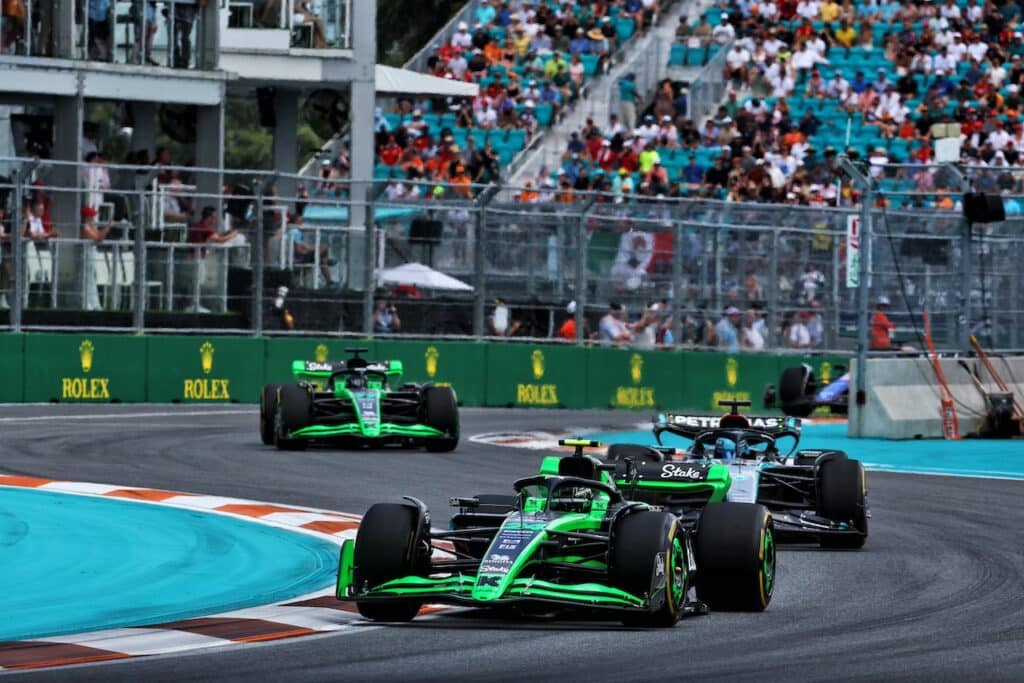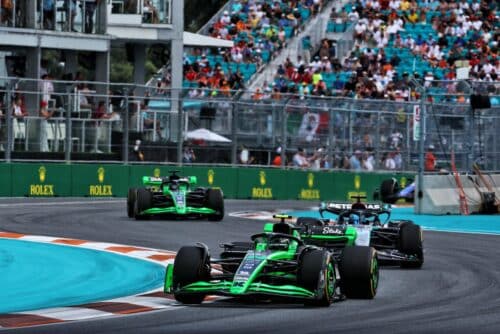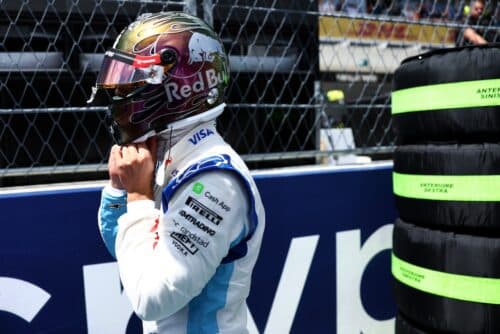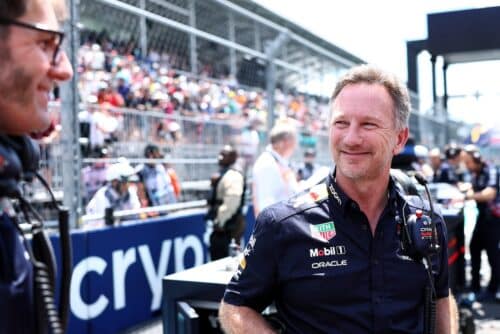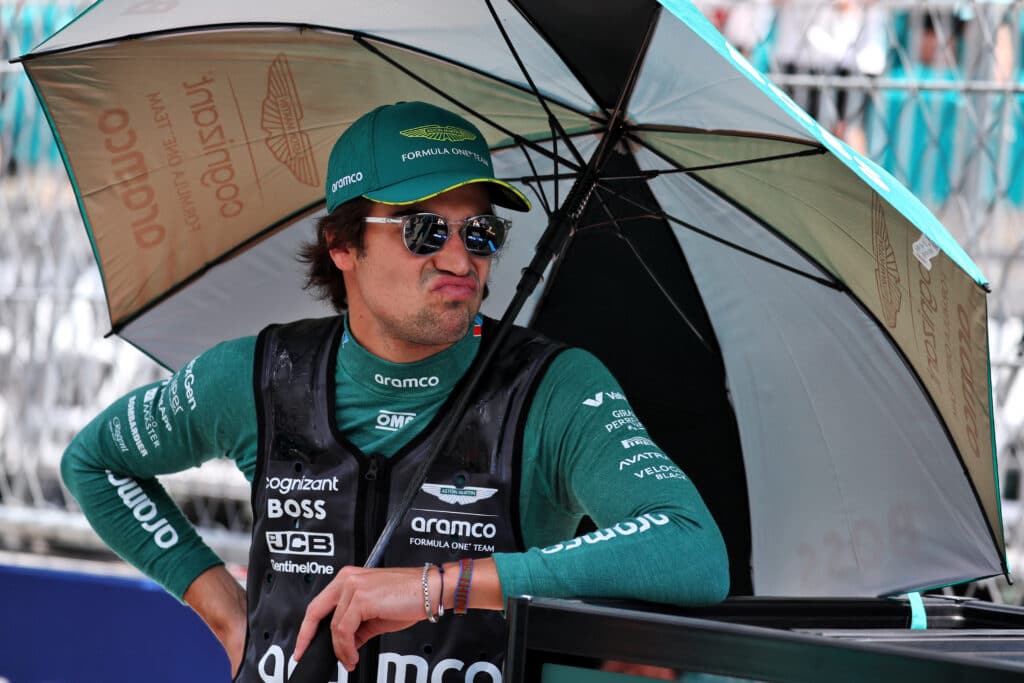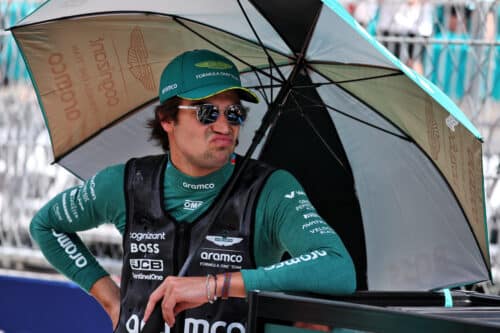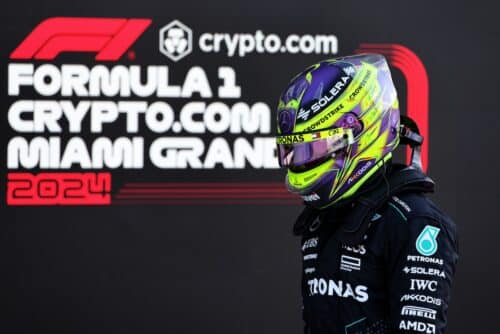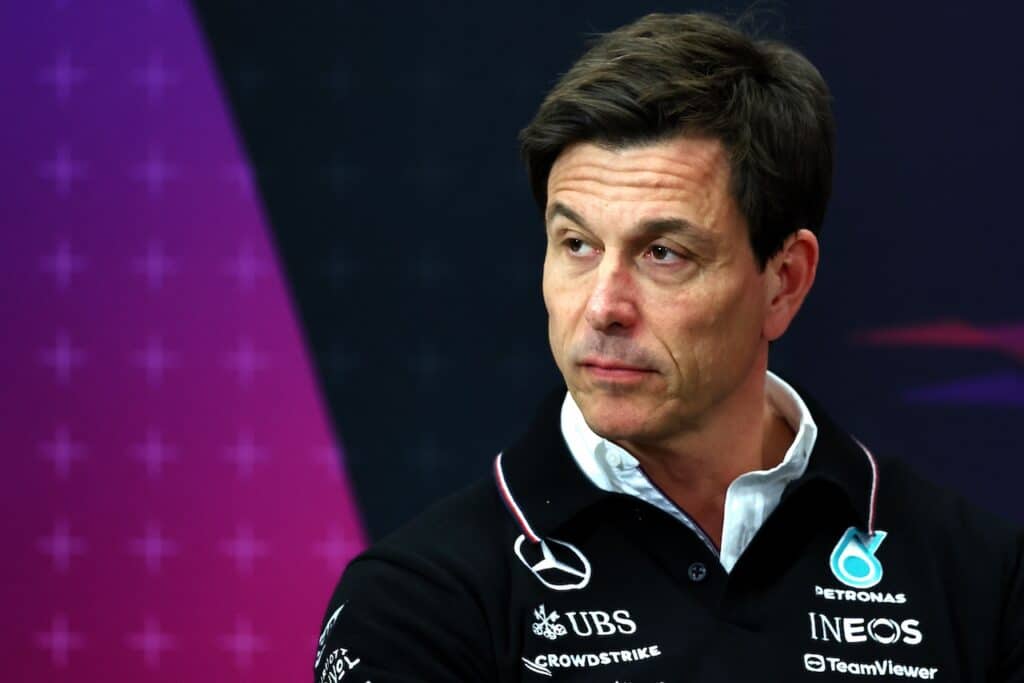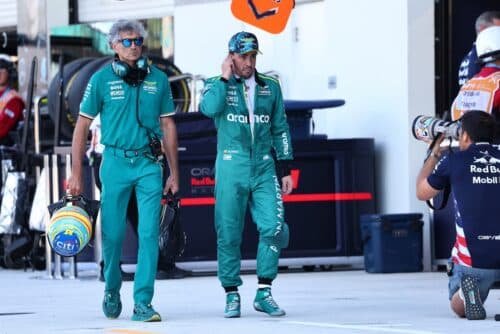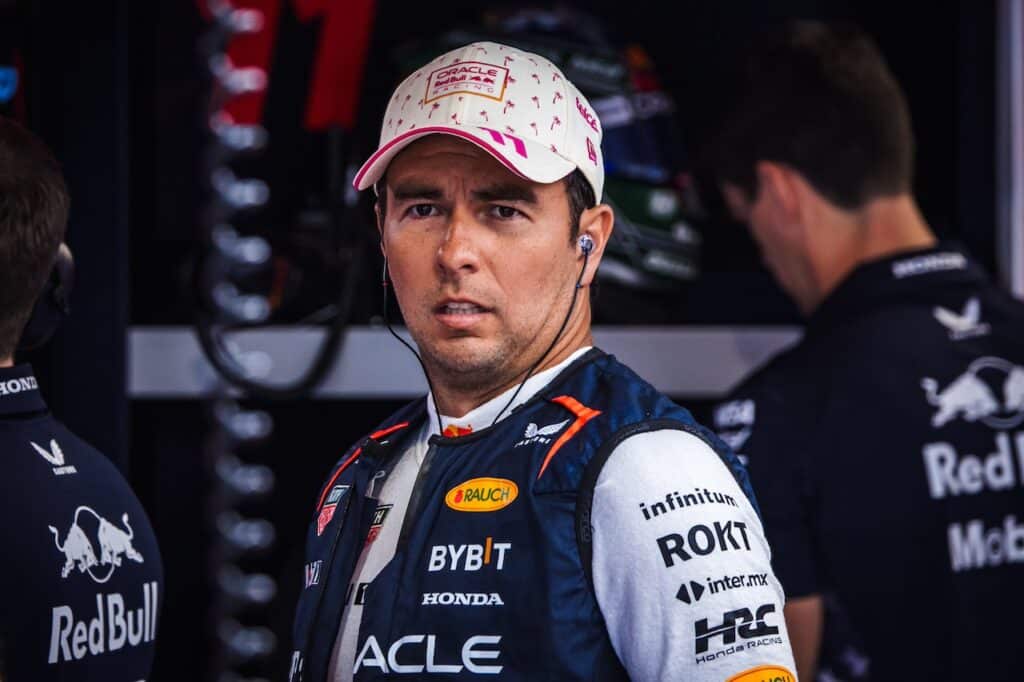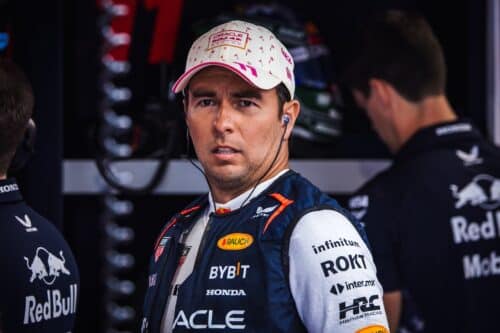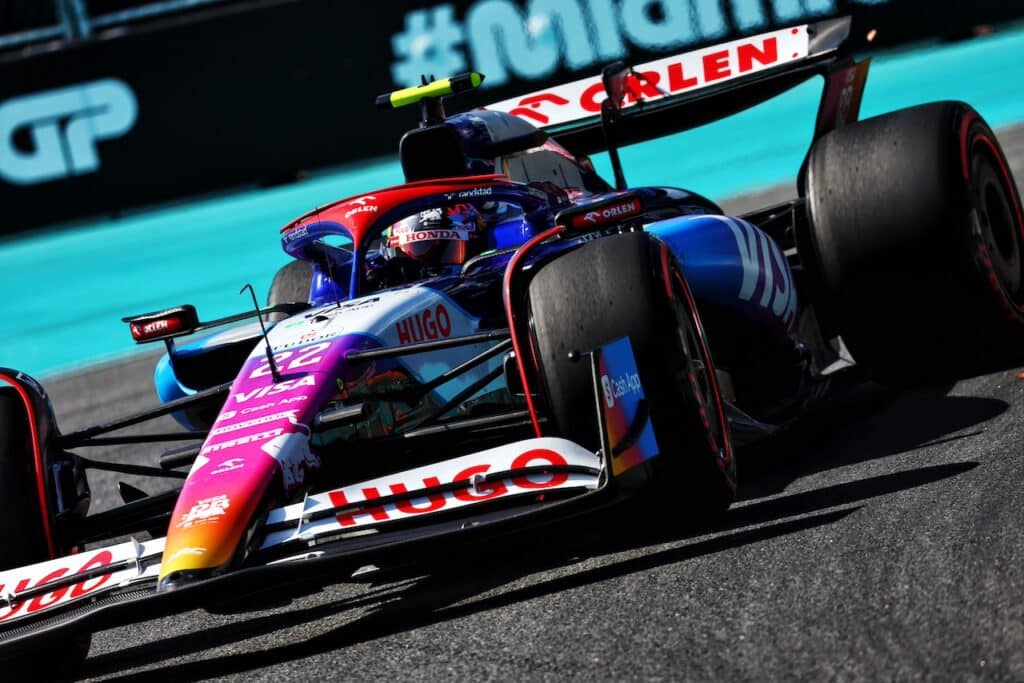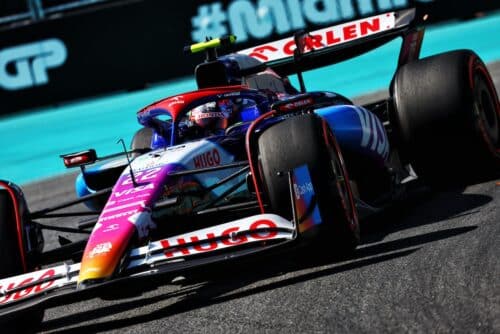F1 | Belgian GP: analysis of qualifying
Let's analyze the most important themes of the seventh seasonal qualification

Mercedes' series of pole positions continues. After having dominated the start of the championship, also on the Belgian track of Spa-Francorchamps, in fact, the German company managed to achieve first position in qualifying thanks to the new record lap set by Lewis Hamilton, author of his fifth pole position of the season. Completing the front row will be the other W11 of Valtteri Bottas, author of a session where he did not shine, but in which he still managed to do what was necessary to guarantee himself the start from the second place and the entire front row for Mercedes, the which will allow the Stuttgart team to manage the starting phases differently.
Max Verstappen will start from third position, also author of a high-level qualifying in which he missed the front row by just fifteen thousandths. Considering Mercedes' current potential, beyond Hamilton's lap, this is a result that Red Bull can be satisfied with and which will guarantee good opportunities ahead of the race. Alexander Albon's other RB16 will start from fifth place, which certainly represents a step in the right direction keeping in mind the qualifying trend of this start of the season, even if the gap from his teammate still remains important, quantifiable around to half a second. Splitting the two Red Bulls will be Daniel Ricciardo, author of an excellent session which once again confirms his skills in qualifying: although an extremely competitive Renault was expected at Spa, as also confirmed by Esteban Ocon's sixth time, undoubtedly the Australian managed to find that something extra, extracting the maximum potential from his car. Good performance also for Carlos Sainz Jr., good at inserting himself between the French single-seaters and those of Racing Point which, on the contrary, somewhat disappointed the expectations of the team itself: it is important, however, to consider that the characteristics of the Belgian track are less more suitable for the RP20 than those of Barcelona, where the English team had shone, and with such a compact midfield it is no surprise to see it lose a few positions compared to the competition. Concluding the top ten will be Lando Norris, this time having a disappointing qualifying, especially for a driver who has now demonstrated that he can often be fighting for important positions on Saturdays.
The fight for elimination in the second heat was quite intense, with several teams ready to compete for access to Q3: among these there was also AlphaTauri which, however, had managed to make it through in the previous rounds at least with one car, she was unable to repeat herself at Spa, finishing in eleventh and twelfth place. However, this is not entirely bad news, because this will give him the opportunity to choose which tires to mount for the start, perhaps adopting a different strategy compared to his more direct rivals. It wasn't a great day, however, for Ferrari, only thirteenth and fourteenth, on a track that lays bare all the problems of the SF1000 and the compromises necessary to make up for its shortcomings: given the expectations after the third free practice session, having managed to get through to Q2 with both drivers can perhaps sadly be considered the only positive aspect of the Red team's Saturday. Behind them will start George Russell, who did not expect to be able to overcome the first qualifying heat considering the characteristics of the car which do not reward the FW43, but today's performance can be seen as the continuation of a journey in the right direction, although Williams in the hands of the Englishman has now accustomed us to high-level performances on Saturdays.
The other teams powered by the Cavallino manufacturer, Alfa Romeo and Haas, were out of Q1, together with the other driver of the Grove team, Nicholas Latifi. Despite the handicap in terms of motoring, it must be underlined that Kimi Raikkonen probably had the potential to overcome the first heat and exclude at least one of the two Ferraris, but a small error in braking at the first corner then deprived him of a result within reach . His teammate, Antonio Giovinazzi, was further behind and was unable to go beyond the eighteenth spot, also the protagonist of a small error that did not allow him to be part of the final fight.
Q1: a fight between Ferrari powered cars
Arriving at Spa, even though the characteristics of the track did not work in favor of the SF1000, one hardly expected to see a Ferrari in such difficulty in all respects. In order to be able to find the best compromise that could on the one hand mask the engine deficit and on the other manage the single-seater's deficiencies in being able to bring the tires to temperature, the engineers of the Italian team had worked on different aerodynamic configurations, testing with Charles Leclerc a more relaxed version which, however, had not given the desired results, so much so that for Saturday the Monegasque had aligned himself with the more loaded set-up of his teammate. Due to the difficulties in finding the key to the problem in an extremely difficult situation well below expectations, the team had worked throughout the night with the support of the staff remaining in the factory to look for some alternatives in terms of set-up that it could above all help the pilots to warm up the tires more quickly and bring them into the right operating window, without however finding the answers they were looking for. The disappointing results of the third free practice session, with Sebastian Vettel finishing in last place, did not leave much hope for qualifying, in which the main objective should have been at least to limit the damage and avoid a double elimination in the first heat, especially considering that the most credible rivals were precisely those who mounted the Italian Power Units on their single-seaters.
The start of Q1 opened with only the two Haas cars ready to take to the track immediately, in order to freely exploit the track at a time when traffic is generally not a problem. For the US team, in fact, up to that point the Spa weekend had not been the simplest, given the numerous engine problems that had prevented it from running for much of the first and second free practice sessions, which is why completing as many kilometers as possible, moreover without disturbances, could also prove essential to have some more data on the single-seater. This, however, was not the only reason that had pushed the Haas technicians to leave so early: if with Romain Grosjean they had opted for a more traditional strategy, with only two attempts due to the time lost due to the FIA checks on the scales , the choice was different for Kevin Magnussen, with whom the team would take to the track in three timed laps. A tactic that Alfa Romeo had adopted in Hungary, loading a lot of fuel on board in view of a possible arrival of rain, even if the short length of the track also played in its favor on that specific occasion. At Spa it would have been much more difficult, not only because the return lap tends to take around two minutes, obviously also taking into account possible traffic on the track, but also because Haas had decided to refuel the car between each run, which is why which the pit stop would have been longer than that of a simple tire change.
At the end of the first attempt, the fight to avoid exclusion was quite heated, with several drivers at risk: from George Russell, thirteenth, to Sebastian Vettel, nineteenth, there were in fact just over four tenths of a second and, considering the progressive improvement of the track and the possibility of having a trail in your favor, it is easy to understand how that gap could be closed. At risk of elimination, in addition to the two drivers just mentioned, there were also Charles Leclerc, Antonio Giovinazzi, Nicholas Latifi, Kevin Magnussen, Kimi Raikkonen and Romain Grosjean, with the Italian from Alfa Romeo who at that moment was in last position useful for passing the turn. It should also be noted that, however, the Haas Dane had completed two different runs at that time, while his teammate had been penalized by having completed his attempt at the start of the session on a track in worse conditions than the one who had found rivals.
With so many drivers ready to compete for access to the next phase of qualifying and a track improvement that could have been quite significant, many drivers had decided to return to the track for the second attempt, with the exception of Hamilton, the Red Bulls, the Renault and Carlos Sainz Jr., who were thus able to save a new set of soft tires knowing they were in a comfortable position for the next round. In addition to pure performance, another problem to take into account was traffic: having so many cars on the track, which among other things would presumably all come out together to take advantage of the last moments available, being able to identify the right track position was fundamental , especially regarding the management of tire temperatures.
Having to wait for the riders in front of them to make room to start their lap, surely those who were towards the back of the group would have been forced to wait in the queue, thus cooling their tires and nullifying the preparation work that had been done in the rest of the tour. A factor not to be underestimated, because the first corner is precisely one of those sections of the track in which the grip provided by the tires is fully exploited to attack the braking aggressively and subsequently obtain maximum performance in the exit traction phase, which is essential for success. to bring as much speed as possible on the straight leading to Eau Rouge. From this point of view, Ferrari's strategists had chosen two different approaches, having Leclerc come out at the head of the group, while Vettel would have found himself in the middle, perhaps taking advantage of the help of a possible wake coming from the drivers in front of him, who on this track can be heard even from three seconds away.
The two Alfa Romeo Racing drivers were the ones who were most affected by this situation, as they found themselves in the last positions of the group. This had them slowing down excessively towards the end of the lap to wait their turn, resulting in their tires cooling down. A fact also confirmed by Antonio Giovinazzi, who shortly before starting his second and final attempt, had opened the radio to inform the pits that the tires were too cold. A choice that didn't pay off even with Kimi Raikkonen, who in fact had arrived slightly wide in turn 1 following a lockup, thus compromising the exit and losing several hundredths of a second which would later prove to be fundamental in the fight to avoid the exclusion considering that Charles Leclerc, last of the qualifiers, had concluded Q1 with a time only eighty-seven thousandths faster. A shame, as the Finn actually seemed to have all it takes to compete for access to the next heat, which perhaps could have come with a better positioning job on the part of the wall: although the idea of exploiting the wakes and the track in the best possible conditions could be partly acceptable, the time lost at the end of the preparation lap had clearly affected the tire heating process, bringing them out of temperature. “We tried our best today and really had a chance to get through, but we couldn't. On the out lap we encountered traffic and the tires were a little too cold when I started the lap. I struggled with oversteer in Turn 1 and lost some time compared to my previous lap. After that I felt good in the car, I was quicker than my previous attempt, but not enough to get through. It's disappointing, but that's how it is. We'll see how it goes tomorrow and do our race: the rain could make the day more hectic, but we won't count on that,” explained the 2007 world champion at the end of qualifying.
In addition to the two Alfa Romeos, Nicholas Latifi and the two Haas were also excluded from Q1. A discussion to be explored further especially for the American team, which experienced an opposite situation. The technical problems encountered during the first two free practice sessions, in addition to having wasted precious time in terms of learning the car, had forced the technicians to replace some components of the Power Uniti on both single-seaters. If, however, Magnussen could count on a fresh unit, the same could not be said for his teammate, for whom it was decided to refit the engine he had used in the first five seasonal events, with the related kilometers completed behind. Despite all these unforeseen events, the possibility of being able to go through was actually concrete, at least with one of the two single-seaters: the one who had the greatest chance was undoubtedly the Dane, who however, after having concluded a good first partial, had dared too much and ended wide and thus losing any chance of avoiding elimination. Going to make a comparison on the partials and mini-sectors, in fact the times obtained up to the moment of the error seemed valid to put him in a position to compete for access to the next round: "Trying three runs here in Q1 was very difficult. After my second attempt, however, the gap to the riders in thirteenth and fourteenth position was not too big, it would have been a good position for us. I knew I had to do a great lap, I gave everything but I went further. I made a mistake in turn 14 and went wide. We had no trails in the first two runs and this cost us at least three tenths. We don't know much about the race pace for tomorrow, we hope, as often happens, that it will be faster than in qualifying", said Magnussen after the exclusion, aware that he had still given everything.
Q2: a choice of strategy
Given the possible strategic interpretations ahead of the race, it was no surprise to see several teams try to change the game in the second qualifying heat by choosing a slightly harder compound for their attempt, as often happens for the top teams . Instead of opting for the soft, in fact, the two Mercedes, the two Racing Points and Max Verstappen had chosen to take to the track with a medium compound set, in order to be able to qualify and then start the race on that particular compound, which it should guarantee greater versatility not only in terms of duration, but also in the event of a possible arrival of rain, extending the stint. On the contrary, all the other teams had decided to fit a new set of the softest tires available. An understandable move given that the gaps in the midfield seemed quite small and a few extra tenths in terms of grip could have meant exclusion or passage to the next round.
At the end of the first attempt, the two Racing Points were at risk of elimination, so the choice of the medium tire had not paid off, which is why it was necessary to make serious evaluations. For his part, Sergio Perez probably still had a couple of tenths of a margin, considering that a mistake in Turn 1 had cost him, according to his estimates, almost twenty hundredths of a second, while Lance Stroll complained of a lack of grip. But would this have been enough to get through? After having made the necessary comparisons with the two standard bearers to understand how much they could lower their times by making a second attempt on the same compound, the engineers had assessed that there was not enough margin to be able to complete the initial idea, seeing themselves forced to adopt a change of strategy and switch to soft tyres. A battle to avoid elimination which did not seem to closely involve the two Ferraris and George Russell, with the latter provisionally closing the rankings. The Englishman from Williams, to tell the truth, had not even recorded an official time, having decided to abort his lap after some small errors in the first and second sectors, also due to the increase in the intensity of the wind in the chicane of “Les Combes”.
Among the main suspects to keep an eye on in view of the last attempt were also the two McLarens and the two Alpha Tauris which, with the progress of Racing Point starting from compound in the second run, would have found an additional rival with which confront. In fact, by using a softer compound compared to the first attempt, the two RP20s had managed to get back into a useful area to protect themselves from a possible elimination, in particular with Lance Stroll, author of an excellent lap which had guaranteed him seventh position. The cars of the Faenza team were the ones who paid the price, as they were excluded with Daniil Kvyat and Pierre Gasly respectively for just eight and twenty-three thousandths to the detriment of Lando Norris, who qualified in tenth position. A challenge in which the details made the difference and certainly the two standard-bearers of the Italian team would have to complain given the small errors made, such as the loss of the rear in the second sector for the Russian or the tailspin in traction at the last curve for French. The positive aspect is that at least this will give AlphaTauri the possibility to choose which tire to start with and it cannot be ruled out that the Italian team could decide to diversify the strategies between the two drivers. It should also be underlined that this is the first time the Russian has managed to beat his teammate on the flying lap.
The two Ferraris of Charles Leclerc and Sebastian Vettel are out and almost three tenths away from the last position valid for passing Q3. Not even a great second attempt by the Monegasque, who had once again shown all his skills in qualifying, had managed to save the Red from an exclusion which in any case seemed to be a foregone conclusion. Having managed to get to that point with both cars undoubtedly represented the only positive aspect of the day for the Maranello team, in particular considering how the Monegasque himself had avoided elimination in Q1 a few minutes in first place for a few hundredths of a second. Difficulties that the Ferrari team principal tried to explain in post-qualifying interviews with the Sky television station: "Already yesterday during free practice we had many difficulties with the car, we were never able to make the tires work, the drivers never had confidence, so the weekend got off to a rocky start. We tried to change the car in every way for today both in terms of balance, set-up and way of doing the preparation lap and then making the best use of the tires in the qualifying attempt. We haven't reached the point we hoped for, I still believe there are some necessary explanations, this weekend there is something we are missing and I expect our technicians and engineers to be able to understand. Having said that, we arrived within two tenths of being able to enter Q3, so the situation has improved compared to yesterday, but not enough to stay ahead of who is our direct rival today", said Mattia Binotto. The SF1000 lost everywhere to its closest rivals, but it was certainly the second sector that penalized the most, where there was not only a low speed compared to the fastest teams, but also an extreme slowness in changing direction, a sign of a front that is difficult to manage and tires that are out of temperature, which do not guarantee the riders the right feeling to dare something more.
Q3: Hamilton and Verstappen prevail
As this season has become accustomed to us, even in Belgium the fight for pole position seemed to be an affair reserved entirely for the two Mercedes drivers, thanks to a good advantage over the competition. A challenge which, however, did not last long, because right from his first attempt Lewis Hamilton had made his cards clear, giving almost six tenths of a second to his teammate, even the latter had not been the author of a particularly clean lap especially due to some errors in the first and second sectors. A considerable delay which, although it was reduced to five tenths in the second attempt, leaves more than a few doubts regarding the performance of the Finn, who made several errors in both runs. Making a comparison between Q2 and Q3, we can see that, despite the different compound, Bottas only managed to improve by half a second, unlike Hamilton and Verstappen, who managed to remove almost eight tenths from their respective times. It is therefore legitimate to ask where the very large gap that the Nastola driver has towards his teammate comes from.
Analyzing the onboard and telemetry data, it is possible to note that as in the first attempt, Bottas was unable to find the perfect interpretation of the first corner, coming in wide at the entrance and losing the rear at the exit. Looking at the comparison, in fact, we can see how already in the center of the corner the Finn was at a disadvantage compared to Hamilton and the correction for the countersteering he had during the traction phase had done nothing but widen this gap. This is a factor to take into consideration, because beyond the time lost itself, exiting the first corner in the best possible way is essential to bring more speed into the following straight that leads to the Eau Rouge-Radillon complex. A mistake similar to that of the first attempt, which had not allowed Bottas to significantly improve the partial obtained in the first sector and which, above all, had already placed him virtually two tenths behind his teammate. Continuing with the lap, we can get to the second half-time, where the Finn had actually managed to improve significantly compared to what he had done previously, but not enough to maintain Hamilton's pace.
Undoubtedly the sequence of turns 5-6-7, better known as "Les Combes", represented one of the key points in Hamilton's domination, as it was precisely in this stretch of the track that he managed to make the difference against his teammate again. squad. What should be brought to attention above all is the passage of the first chicane, where the two had demonstrated different driving styles: Hamilton was cleaner, who had made the change of direction more delicately, unlike Bottas who had preferred to set it up with a movement of the steering wheel more aggressive. Telemetry tells us that precisely at this point, the six-time world champion was thus able to bring almost 15 km/h more speed over the course, thus guaranteeing himself a small advantage. Also worth highlighting is the exit at turn seven, where once again the Englishman had been very clever in making the most of the limits of the track. For this weekend, in fact, the race commissioners had revised the track limits in different areas of the track, such as for example at the exit from turn 7 or turn 14, where the drivers wanted to exploit the external part as much as possible to bring greater exit speed: for this reason the full use of the curb was also considered valid which, although it guaranteed less grip than the asphalt, allowed for smoother driving. A factor that Lewis had exploited to the full, in particular at the exit of Turn 7, where from the comparison it is possible to see how much he had exploited the curb to a greater extent compared to his teammate, thus avoiding the price of having to raise the driver's foot excessively. accelerator.
Continuing with the lap, we can also see how Bottas's turn 9 was far from ideal, having had to correct an oversteer which had pushed him to almost eliminate the accelerator input, with consequent loss not only in the in itself, but also in terms of speed for the next straight that would lead to the “Pouhon”. Rear problems which can also be found in the inclusion of number 12, so, considering all these small errors, it certainly wouldn't have been a surprise to see the virtual gap between the Finn and his teammate grow further by around two and a half tenths.
Different interpretations are also visible in the last chicane of the track, which is very difficult due to its conformation and tends to take the pilots a lot towards the outside due to its offset. As can be appreciated from the images, Bottas had opted to try to bring more speed into the entry, thus letting the car slide halfway through the corner even though this meant ending up slightly wide and in a more awkward position for the setting of the second half of the chicane . In fact, by making a comparison, we can see that even if he was actually virtually behind his teammate during the setup phase of the second part of the chicane, the chosen line would have guaranteed him the opportunity to have a better exit towards the final straight , thus being able to straighten the car more quickly and make the most of the grip provided by the tires for the final stretch. An opposite situation for Valtteri, who, despite the advantage obtained in the first part of the chicane, had opted for a very wide line, which would have penalized the setting of the second part due to the little space available. Going to complete the outgoing comparison, in fact, it is possible to note how at the moment in which the six-time world champion was with the steering wheel practically almost open, guaranteeing himself the opportunity to better exploit the footprint of the tires in order to put the power to the ground of his Power Unit, the Finn was still in the rotation phase with a rather pronounced steering angle, which naturally limited the possibilities of finding the best possible acceleration in view of the last stretch.
The final five tenths at the finish line suffered by the number 77 are perhaps the clearest proof that something did not work properly on his Belgian Saturday, fully demonstrating the difference that there can be between a lap full of small errors and an extremely clean one, like that of Hamilton, which thus guaranteed him his fifth pole position of the season.
Despite the gap suffered by his teammate, Bottas still managed to limit the damage, gaining second position, although the chances of losing the front row to Verstappen were actually quite high, given only fifteen thousandths to separate the two. A minimal gap, mainly due to the second sector, the one in which the W11 made the difference against its rivals throughout the weekend.
In the first half, in fact, the Red Bull driver had been extremely fast, thanks to a perfect interpretation of the first corner, both entering and exiting, unlike that of the Mercedes standard bearer, who as we have seen had encountered some difficulty. This had guaranteed him the opportunity to bring a few km/h of speed to the Eau Rouge-Radillon complex, which is now fully raced with modern cars. However, it is worth mentioning one detail: for this weekend, the Anglo-Austrian team had opted to use a slightly lower set-up than that of their German counterpart, which would have given them an advantage on the straight sections, then paying the price price in guided areas. Precisely in the final part of the straights, however, looking at the telemetry, one can notice how the clipping phenomenon occurred to a lesser extent on Verstappen's car, with the power being cut by the electric motor, unlike the two Mercedes, which instead continued to gain speed until the end without experiencing the same problem. A factor that Verstappen himself had also spoken about in post-qualifying interviews and which will be important to take into consideration for the rest of the lap too.
Continuing with the second sector, we can see how in the most guided section of the track, despite some small errors, the number 77 of the "Star" still managed to be more incisive in its travel, especially at the "Bruxelles", where being managing to maintain an internal line had allowed him to gain precious meters in the match. A difference that could also be appreciated in the other guided sections of the second set, which allowed him to reach the detection with a virtual advantage of around two tenths.
By taking advantage of the straight stretches of the last sector, however, Verstappen was able to reduce this gap again, reaching approximately the times of his Mercedes rival, despite the fact that even in this case it had occurred slightly when it had already occurred previously, i.e. clipping in the final part of the high-speed zones. The setting of the last curve was also extremely interesting in this case. Just like Hamilton, the Dutch driver had also decided to follow a line aimed at favoring the second part of the chicane rather than entering the first phase, thus choosing a very internal trajectory. A choice that in fact he had paid for at the exit, thus guaranteeing Max the opportunity to anticipate the acceleration phase, even if an oversteer had forced him to lift his foot and lose the good things he had done up to that moment. Probably, with a more "delicate" exit, Verstappen would have managed to achieve second position, although the second row is a result in line with expectations: "For us it has been a positive weekend so far. We arrived here and thought it would be difficult, but being P3 and so close to Bottas, overall we can be satisfied. The lap was good, I lacked a little energy, maybe I ran out too much, it's difficult to manage it for the whole lap. In the end, I found perhaps the best way to do the fastest lap,” commented the number 33 in interviews, also explaining the problems related to the ERS.
An extremely positive day also for Renault, which managed to gain fourth and sixth place on the starting grid by taking advantage of the characteristics of the track which are well suited to the RS20. For his part, Daniel Ricciardo as usual put something extra into it, demonstrating all his skills in qualifying which made him one of the most appreciated drivers in this respect, thus repeating the good sensations seen at Silverstone. After the first attempt, the Australian even managed to virtually gain third position, but a second run in which he was unable to find the right feeling forced him to abort the lap and settle for the final fourth place. Positive qualification also for Esteban Ocon: although sixth place does not represent his best result of the season, being able to obtain this performance on a dry track is a step in the right direction. It will be interesting to see what the two French single-seaters can do at the start of the race with not only a more unloaded set-up, which should help them on the straights, but also with soft compound tyres, which should reach temperature more easily than the yellow stripe ones on which the three first classified at the start will be able to count. Splitting the two Renaults will be Alex Albon who, although in this case too he has a considerable gap from his teammate, continues to make steps forward in the right direction: starting so far ahead will be fundamental for him because, if he manages to at least maintain his position, this would prevent him from immediately ending up in traffic, a factor that penalized him greatly in previous events. Seventh position for Carlos Sainz, who only missed the third row by a few hundredths of a second: considering Renault's potential on this circuit, this is still a good starting point, which leaves the door open to various possibilities in the race. It didn't go as well for the other car from Woking, which will start from tenth place tomorrow, paying the price of not having found the right slipstream in the final attempt, which is the one in which most of the drivers made a leap forward. Splitting the two McLarens will be the Racing Points who, however, had not made the final attempt, preferring to remain in the pits due to the lack of a new set of soft tires available.
The strategies
On the subject of strategies, assuming it doesn't rain during the race, Pirelli suggests completing the first eighteen laps of the race on the soft, and then reaching the finish line on the medium: according to the Italian manufacturer, the opposite solution is also a valid alternative. Among the other strategies proposed there is also that of starting on the soft by completing sixteen steps, and then moving on to the hard until the end. One of the big unknowns will certainly be the rain, which could completely change the scenario during the race.
if you want to always be updated on our news
Follow us here












